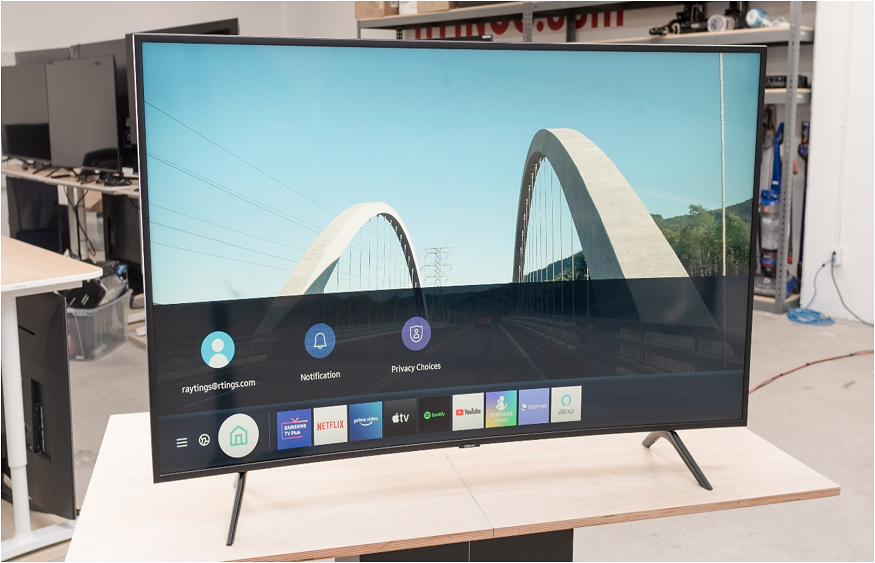In the modern era, owning a television set has transitioned from being a luxury to becoming an indispensable necessity in every household. Gone are the days when the choice was as simple as deciding between a black and white or color TV. Today, the television market is vastly different, offering a plethora of options that can make the TV upgrade process quite daunting. Stepping into an electronics store, you’re likely to be bombarded by salespeople using technical jargon like HD, 4K, 8K, QLED, and more, leaving you feeling overwhelmed and perplexed. If you can relate to this common predicament, fret not! This article serves as a handy mini-guide to help you navigate the diverse range of televisions available in the market and understand the key differences between them.
1- Curved TV
Curved televisions feature a slightly curved display panel that doesn’t significantly differ from flat TVs in terms of viewing angles. The concave surface aims to deliver an “immersive” viewing experience. One advantage of curved screens is that they prevent the fading out or darkening of the edges, even when viewed up close. However, curved TVs are wider than flat ones and can appear awkward when mounted on a wall. Currently, only a few companies manufacture curved screens, as flat displays have gained an advantage over them. These are some of the television types you’re likely to encounter in electronics stores. Now that you understand the basic differences between them, take note of the desirable features and select the style that appeals to you the most with Noon Discount Code.
2- Flat TVs
Flat TVs are among the most popular television options available, distinguished by their screen type. These televisions feature a sleek, thin display that can utilize various technologies such as Plasma, LED, 4K, and 8K. It’s no surprise that these lightweight screens, measuring less than 4 inches in thickness, have replaced the bulky CRT TVs that were over 30 inches thick. In the 21st century, flat display panels have become the norm for televisions due to their low power consumption, slim design, and convenience. They can be categorized into two subtypes: static and volatile.
3- Digital Light Processing TVs
Introduced by Texas Instruments in the 1980s, Digital Light Processing (DLP) televisions emerged as a solution to the limitations of previous TV technologies. These TVs utilize a chip called the Digital Micromirror device (DMD) containing countless microscopic mirrors referred to as Pixels. By applying an electric field, these mirrors can tilt towards or away from the screen, resulting in the display of images. DLP TVs boast exceptional picture quality, comparable to that of LCD TVs. Thanks to the rapid movement of these mirrors, DLP TVs excel at showcasing fast-moving content like sports or racing, outperforming other television options in this regard.
4- Plasma Televisions (PDPs)
During the early 2000s, Plasma Televisions (PDPs) experienced a surge in popularity as many customers made the switch from conventional Cathode ray TVs. These televisions gained immense demand due to their sleeker screens and impressive picture quality. The name “Plasma” originates from the ionized gas utilized within these TVs, capable of responding to electricity. The TV screen is structured as a grid filled with Plasma, which illuminates the pixels. It boasted faster frame response times and superior color contrast in comparison to their predecessors.



